Selected References:
- Blackmore-Prince C, et al. 1999. Chemical hair treatments and adverse pregnancy outcome among Black women in central North Carolina. Am J Epidemiol, 149:712-716.
- Borowska S, et al. 2015. Metals in cosmetics: implications for human health. J Appl Toxicol, 35: 551–572
- Burnett C, et al. 1976. Teratology and percutaneous toxicity studies on hair dyes. J Toxicol Environ Health, 1:1027-1040.
- Chan M, et al. 2023. Use of personal care products during pregnancy and birth outcomes – a pilot study. Environ Res, 225:115583.
- DiNardo JC, et al. 1985. Teratological assessment of five oxidative hair dyes in the rat. Toxicology and Applied Pharmacology, 78:163-166.
- Gallicchio L, et al. 2010. Health outcomes of children born to cosmetologists compared to children of women in other occupations. Reprod Toxicol, 29:361-365.
- Ghazarian AA. et al. 2018. Maternal use of personal care products during pregnancy and risk of testicular germ cell tumors in sons. Environ Res, 164:109-113.
- Guerra-Tapia A, Gonzalez-Guerra E. 2014 Hair cosmetics: dyes. Actas Dermo-sifiliogr, 105(9):833-839.
- Goebel C, et al. 2012. Quantitative risk assessment for skin sensitisation: consideration of a simplified approach for hair dye ingredients. Regul Toxicol Pharmacol, 64(3):459–465.
- Haraux E, et al. 2016. Maternal exposure to domestic hair cosmetics and occupational endocrine disruptors is associated with a higher risk of hypospadias in offspring. Int J Environ Res Public Health, 14(1):1071.
- Herdt-Losavio ML et al. 2009. The risk of congenital malformations and other neonatal and maternal health outcomes among licensed cosmetologists. Am J Perinatol, 26:625-631.
- Henrotin JB, et al. 2015. Reproductive disorders in hairdressers and cosmetologists: a meta-analytical approach. J Occup Health, 57:485-496.
- Inouye M. and Murakami U. 1977. Teratogenicity of 2,5-diaminotoluene, a hair dye constituent, in mice. Food and Cosmetics Toxicology, 15(5):477-451.
- Jiang C, et al. 2018. The effect of pre-pregnancy hair dye exposure on infant birth weight: a nested case-control study. BMC Pregnancy Childbirth, 18(1):144.
- John EM, et al. 1994. Spontaneous abortions among cosmetologists. Epidemiol, 5:147-155.
- Kersemaekers WM, et al. 1996. Reproductive disorders among hairdressers. Epidemiol, 8:396-401.
- Ki-Hyun K, et al. 2016. The use of personal hair dye and its implications for human health. Environ Int, 89–90:222–227.
- Kim D. et al. 2016. Reproductive disorders among cosmetologists and hairdressers: a meta-analysis. Int Arch Occup Environ Health, 89(5):739-53.
- Kojima R, et al. 2021. Association between gestational hair dye use and allergies at 3 years old: the Japan environment and Children’s study. Environ Res, 201:111530.
- Maibach HI, et al. 1975. Percutaneous penetration following use of hair dyes. Arch Dermatol, 111:1444-1445.
- Marks TA, et al. 1979. Teratogenicity of 4-nitro-1,2-diainobenzene (4NDB) and 2-nitro-1,4-diaminobenzene (2NDB) in the mouse. Teratology, 19:37A-38A.
- Marks TA, et al. 1981. Teratogenic evaluation of 2-nitro-p-phenylendiamine, 4-nitro-o-phenylenediamine, and 2,5-toluenediamine sulfate in the mouse. Teratology, 24:253-265.
- Occupational Safety and Health Administration (OSHA). 2011. Hair Smoothing Products That Could Release Formaldehyde. Hazard Alert Update. Available at: https://www.osha.gov/sites/default/files/publications/hazard_alert.pdf [Accessed 2024].
- Ooka T, et al. 2021. Association between maternal exposure to chemicals during pregnancy and the risk of feotal death: the Japan Environment and Children’s Study. Int J Environ Res Public Health, 18(22):11748.
- Peretz J, et al. 2009. Infertility among cosmetologists. Reprod Toxicol, 28(3):359-364.
- Preston EV, et al. 2021. Endocrine disrupting chemical-associated hair product use during pregnancy and gestational age at delivery: a pilot study. Environ Health, 20(1):86.
- Quach T, et al. 2015. Adverse birth outcomes and maternal complications in licensed cosmetologists and manicurists in California. Int Arch Occup Environ Health, 88:823-833.
- Quiros-Alcala L. et al. 2019. Occupational exposures among hair and nail salon workers: a scoping review. Curr Environ Health Rep, 6(4):269-285.
- Riveria-Núñez Z, et al. 2022. Personal care products: Demographic characteristics and maternal hormones in pregnant women from Puerto Rico. Environ Res, 206:112376.
- Rylander L, et al. 2002. Reproductive outcome among female hairdressers. Occup Environ Med, 59:517-522.
- Siegel MR. et al. 2022. Maternal occupation as a nail technician or hairdresser during pregnancy and birth defects, National Birth Defects Prevention Study, 1997-2011. Occup Environ Med. 79(1):17-23.
- Shawahna R. 2021. Breast milk to blood lead ratios among women from the West Bank of Palestine: a cross-sectional study of associated factors. Int Breastfeed J, 16(1):61.
- Shawahna R, et al. 2023. Breastmilk cadmium levels and estimated infant exposure: a multicenter study of associated factors in a resource-limited country. Int Breastfeed J, 18(1):36.
- Shishavan MK, et al. 2021. The association of hair coloring during pregnancy with pregnancy and neonatal outcomes: a cross-sectional study. International Journal of Women’s Health and Reproduction Sciences, 9 (2):130–135.
- Siegel MR. et al. 2022. Maternal occupation as a nail technician or hairdresser during pregnancy and birth defects, National Birth Defects Prevention Study, 1997-2011. Occup Environ Med, 79(1):17-23.
- Tokinobu A, et al. 2023. Pre- and postnatal maternal hair dye use and risk of wheeze and asthma in 5-year-old Japanese children: the Kyushu Okinawa Maternal and Child Health Study. Int J Environ Health Res, 33(12):1697-1705.
- S. Food and Drug Administration (FDA). 2024. Hair Smoothing Products That Release Formaldehyde When Heated. https://www.fda.gov/cosmetics/cosmetic-products/hair-smoothing-products-release-formaldehyde-when-heated. [Accessed 2024].
- S. Food and Drug Administration (FDA). 2024. Cosmetics & Pregnancy. https://www.fda.gov/cosmetics/resources-consumers-cosmetics/cosmetics-pregnancy. [Accessed 2024]
- S. Food and Drug Administration (FDA). 2024. Hair Productshttps://www.fda.gov/cosmetics/cosmetic-products/hair-products. [Accessed 2024]
- Wise LA, et al. 2023. Use of chemical hair straighteners and fucundability in a North American Preconception Cohort. Am J Epidemiol, 192(7): 1066-1080.
- Zanonia TB, et al. 2014. Basic Red 51, a permitted semi-permanent hair dye, is cytotoxic tohuman skin cells: studies in monolayer and 3D skin model using human keratinocytes (HaCaT). Toxicol Lett, 227(2):139-149.
- Zhu JL, et al. 2006. Pregnancy outcomes among female hairdressers who participated in the Danish National Birth Cohort. ScandJ Work Environ Health, 32(1):61-66.
- Zota AR, et al. 2017. The environmental injustice of beauty: framing chemical exposures from beauty products as a health disparities concern. Am J Obstet Gynecol, 217(4):418-422.

